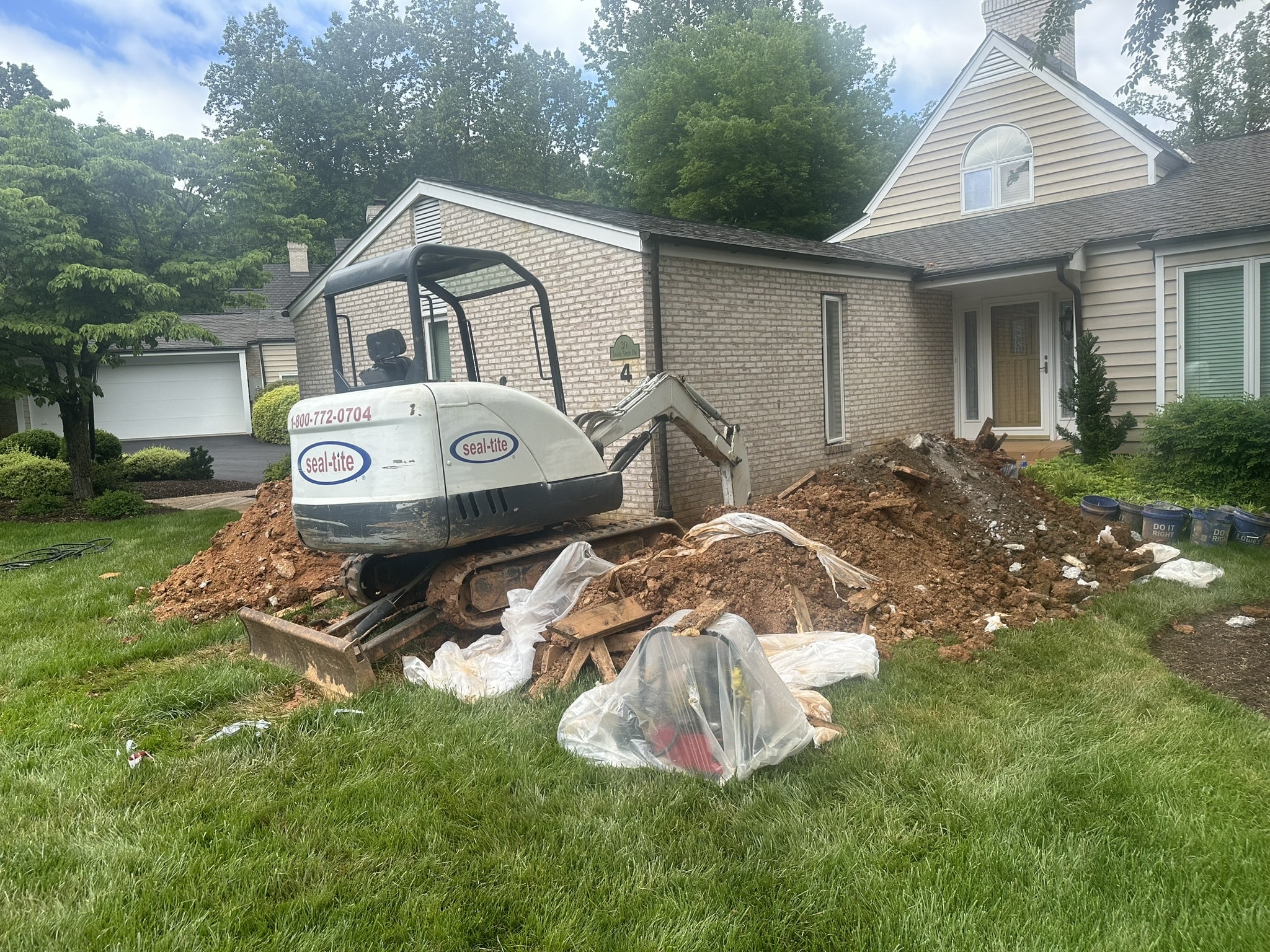
A well-designed landscape adds beauty, shade, and curb appeal to any home. But what many homeowners don’t realize is that their landscaping choices can also have a major — and often negative — impact on the health of their foundation.
The position of trees, the slope of your yard, the type of soil you use, and even how you water your lawn can all influence the stability of your foundation. In fact, poor landscaping is a silent contributor to thousands of foundation repair cases each year.
In this article, we’ll explore how landscaping affects your foundation, the red flags to watch for, and how to design your yard to protect rather than damage the base of your home.
🔑 Key Takeaways
- Landscaping elements like trees, grading, and irrigation systems can increase soil movement and stress on your foundation.
- Common risks include moisture imbalance, root intrusion, and poor water drainage.
- Strategic planting, proper slope design, and moisture control can preserve foundation integrity.
- Early warning signs include soil erosion, water pooling, and new foundation cracks near landscaped areas.
- Partnering with foundation experts and landscapers helps protect both your home and your outdoor space.
The Link Between Landscaping and Foundation Damage
The soil around your home plays a direct role in foundation stability. Landscaping choices — from the location of a tree to the shape of a garden bed — can change how water flows, where moisture accumulates, and how soil expands or contracts.
How Soil and Moisture Behave
- Expansive soils (such as clay) absorb water and swell, pushing against the foundation.
- When these soils dry out, they shrink, creating gaps that lead to settlement.
- Landscaping can accelerate both processes depending on how it directs water or draws moisture from the ground.
Landscaping Features That Can Harm Your Foundation
1. Trees Planted Too Close to the House
Tree roots can extend 1.5–3 times beyond the drip line (the edge of the canopy). Aggressive root systems:
- Pull moisture from the soil unevenly, causing shrinkage and settlement.
- Disrupt the compacted soil around the foundation, reducing support.
- In some cases, physically damage foundation walls or underground pipes.
Worst Offenders:
- Willow
- Silver maple
- Oak
- Poplar
- Elm
2. Poor Grading Around the Foundation
If the ground around your home slopes toward the foundation, rainwater collects against the walls instead of draining away. This creates:
- Hydrostatic pressure, which pushes water into cracks or forces walls to bow.
- Soil saturation, increasing the likelihood of movement and erosion.
Ideal grading: 6 inches of slope over the first 10 feet away from the foundation.
3. Overwatering or Improper Irrigation
Automatic sprinklers, drip systems, or frequent manual watering can keep the soil around the foundation too wet — especially in clay-rich soils. Over time, this:
- Causes expansion and increased lateral pressure on foundation walls.
- Creates uneven moisture levels that lead to differential settlement.
4. Raised Beds and Decorative Borders
Raised garden beds or flower borders can trap moisture next to the foundation if they’re not built with proper drainage in mind. Stone or brick barriers often:
- Block water flow.
- Create water pooling zones.
- Conceal early signs of soil erosion.
5. Concrete Patios or Hardscaping Without Drainage Gaps
Patios or walkways installed too close to the home without expansion joints or drainage gaps can direct water toward — instead of away from — your foundation. Water can also seep underneath and soften the soil supporting the structure.
Warning Signs That Landscaping Is Harming Your Foundation
| Symptom | What It Might Indicate |
|---|---|
| Cracks in foundation walls near gardens | Water pooling or soil shifting from landscaping. |
| Gaps forming between soil and foundation | Shrinkage from nearby tree roots. |
| Water seepage in basement after rain | Poor grading or blocked water flow. |
| Sinking or tilting patios/walkways | Soil erosion from improper drainage. |
| Large tree roots visible at surface near home | Root intrusion or moisture imbalance. |
If you notice any of these symptoms, a joint evaluation from a foundation and landscaping expert is recommended.
How to Landscape Without Damaging Your Foundation
1. Mind the Tree Placement
- Small trees and shrubs: Plant at least 5–10 feet away from the foundation.
- Large trees: Keep 15–25 feet away, especially those with aggressive roots.
- Consider root barriers if large trees are already in place.
2. Design for Drainage
- Ensure all landscape elements encourage water to flow away from the house.
- Avoid mounded beds that slope inward toward the foundation.
- Use permeable materials in patios and pathways to promote drainage.
3. Use Native or Low-Water Plants Near the Home
- Select plants that require minimal irrigation to reduce overwatering risks.
- Mulch planting beds to help retain moisture evenly and reduce soil erosion.
4. Monitor Soil Moisture Year-Round
- During dry seasons, gently water the soil to avoid shrinkage.
- Don’t allow soil to become excessively wet or dry on one side of the home compared to the other.
5. Install and Maintain Proper Drainage Systems
- Extend downspouts at least 6–10 feet from the foundation.
- Keep gutters clear and functional.
- Consider French drains or swales in problematic areas.
Real-Life Case: When Landscaping Went Too Far
A homeowner in Roanoke, VA, installed raised flower beds and decorative retaining walls against their foundation for curb appeal. Unfortunately, the beds trapped water near the home, and the dense clay soil underneath expanded over time.
Within a year, the basement walls began showing horizontal cracks, and musty odors appeared after rain. Seal-Tite Basement Waterproofing inspected the property and found:
- Poor grading behind the garden beds.
- Saturated soil creating hydrostatic pressure.
- Early signs of wall bowing.
Solution Provided:
- Removed soil and regraded the landscape to restore slope.
- Installed an exterior drainage system.
- Reinforced basement walls with carbon fiber straps.
The homeowner kept their beautiful yard — without risking their foundation again.
FAQs: Landscaping and Foundation Health
Can trees really cause foundation damage?
Yes — especially large, water-thirsty trees planted too close to the home. Their roots can cause moisture imbalance and even physically disrupt foundation structures.
Do I need to remove trees near my home?
Not always. Strategic trimming, root barriers, and soil moisture management may allow you to preserve trees without risking your foundation.
How often should I inspect my yard’s slope and drainage?
Twice a year — ideally in spring and fall. Look for signs of erosion, pooling water, or settling.
Should landscaping companies understand foundation safety?
Yes. Reputable landscapers should consider grading, root systems, and drainage. It’s always wise to involve a foundation specialist if you have concerns.
Will waterproofing help protect against poor landscaping?
Yes. A combination of waterproofing, proper grading, and landscape planning is the best defense.
Conclusion: A Beautiful Yard Starts with a Strong Foundation
Your landscaping should complement your home — not compromise it. From tree placement and irrigation to grading and garden design, every element of your yard has the potential to influence the stability of your foundation.
The good news? With smart planning and the right team, you can have both a beautiful outdoor space and a solid, safe home.
If you’re seeing signs of erosion, pooling water, or foundation cracks near your landscaping, don’t wait. Contact Seal-Tite Basement Waterproofing for a professional inspection. We’ll help you protect your home from the ground up — literally.

Seal-tite Basement Waterproofing Co. is a full service basement environment contractor. We carry an A+ Better Business Bureau rating. We repaired over 40,000 homes and structures in Virginia, West Virginia, Tennessee, and North Carolina. We are fully insured and licensed. We have worked in all types of locations, including residential and commercial locations, government agencies, colleges, hospitals, churches, and condo associations.
Seal-tite® offers a lifetime transferable warranty. We carry a Class A Contractor’s License and we are fully insured. Our satisfied customers range from government agencies to businesses, hospitals, colleges, churches, and thousands of homeowners. Your home is probably the single largest investment you will make in your lifetime. Don’t wait, call Seal-tite® to help make your home dry, safe and livable.

